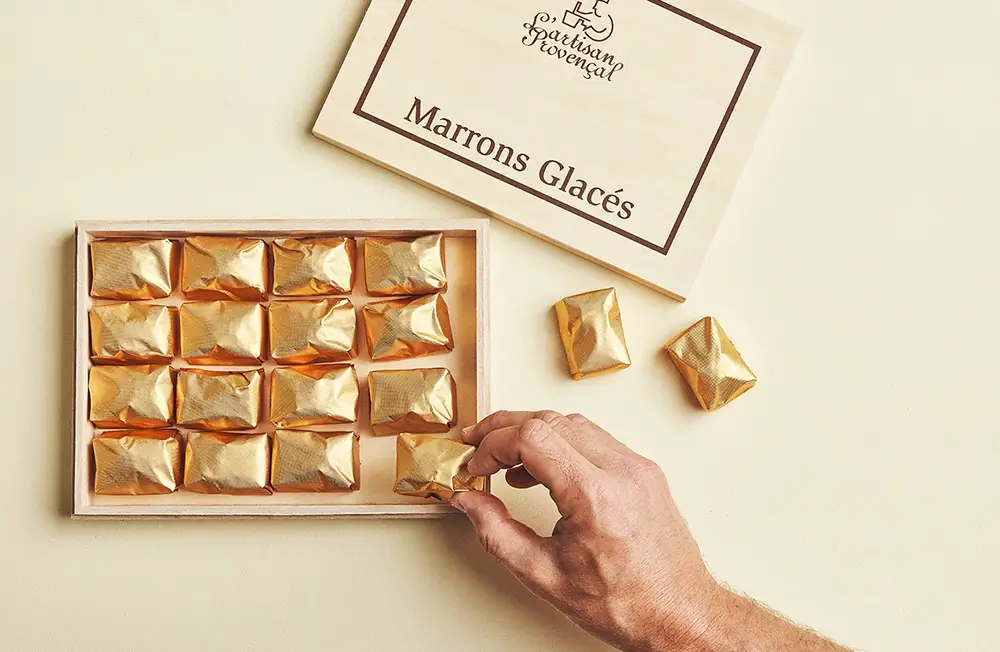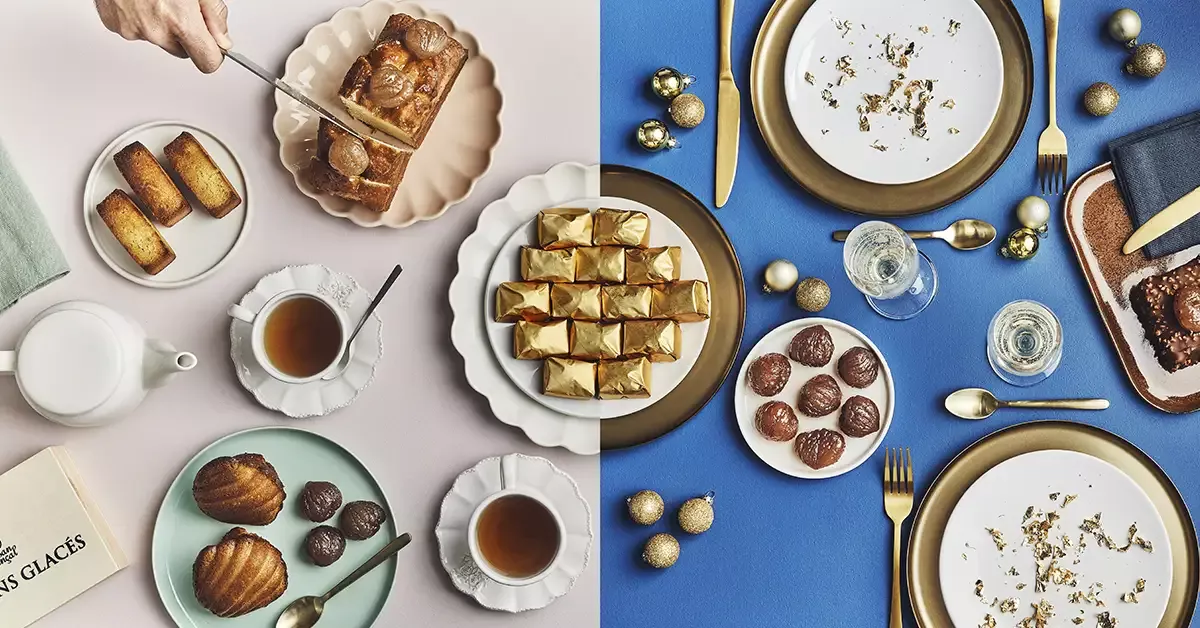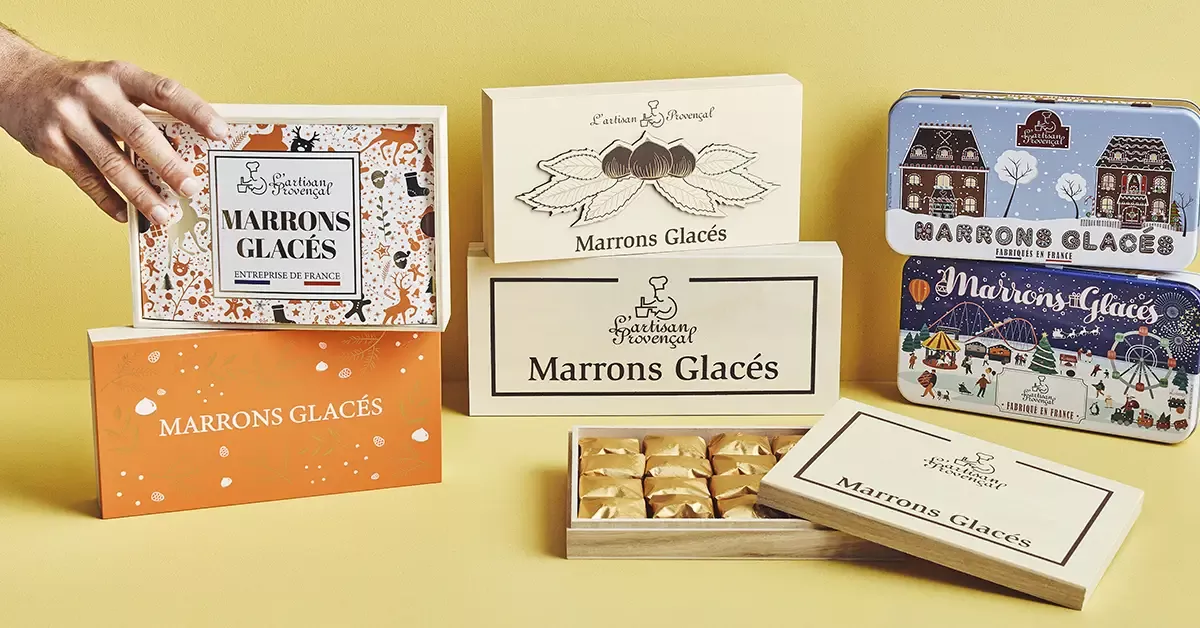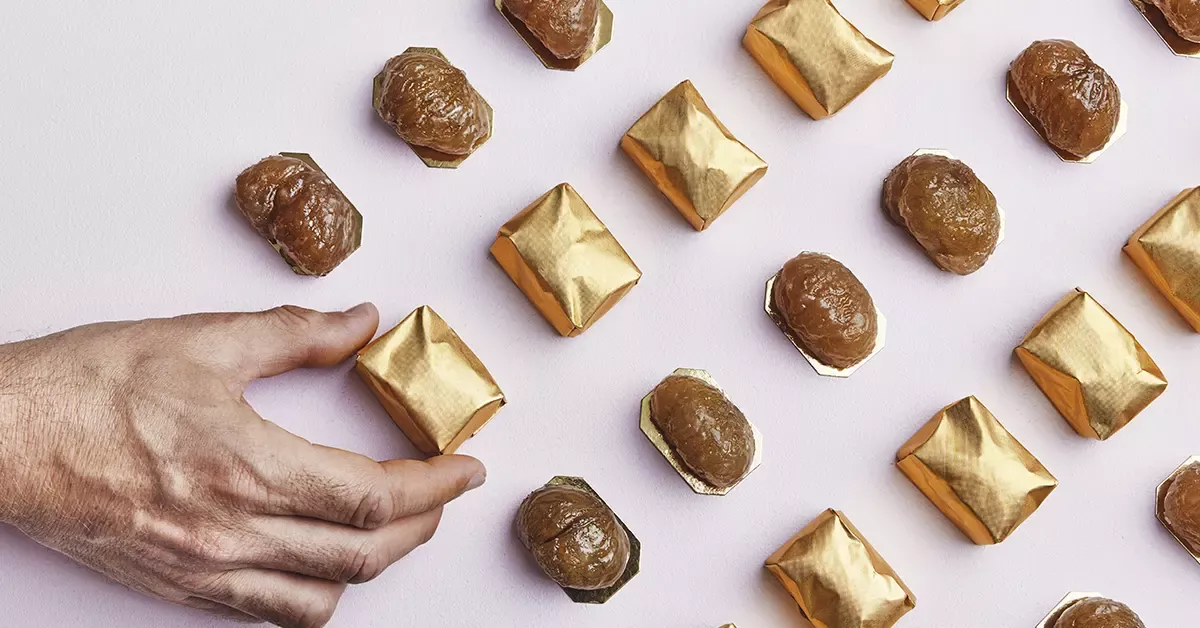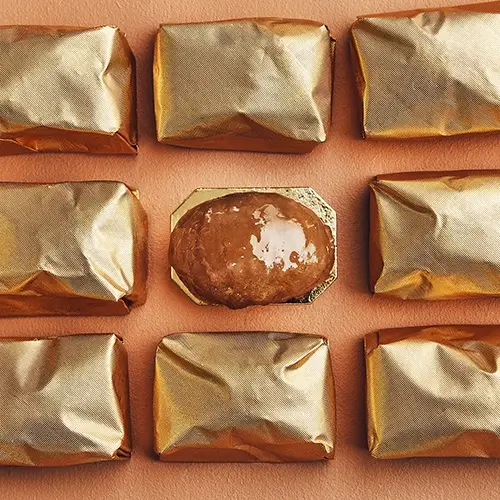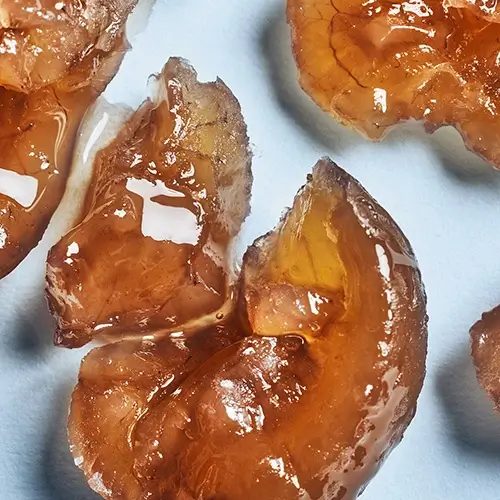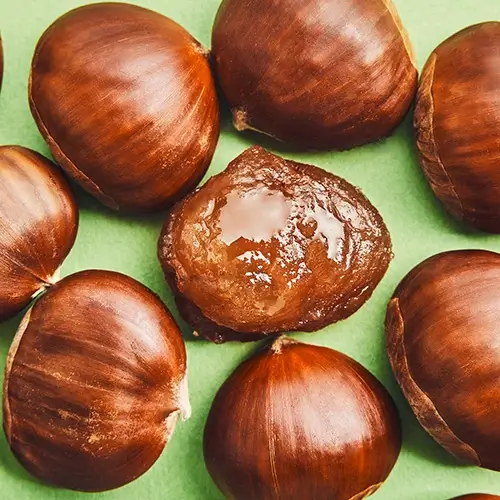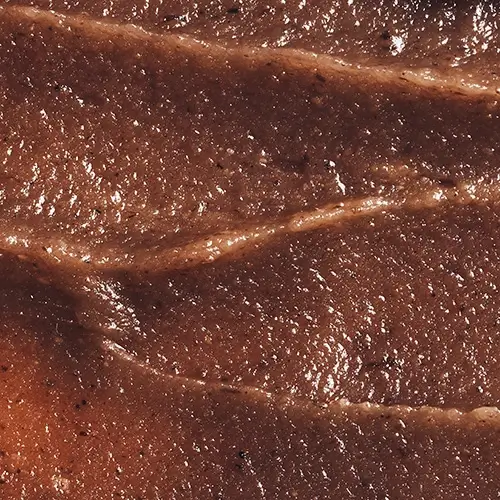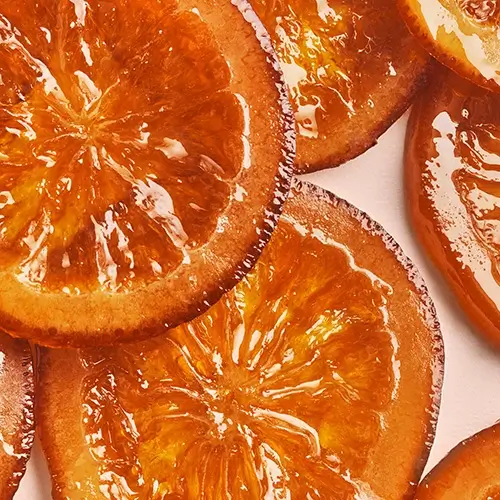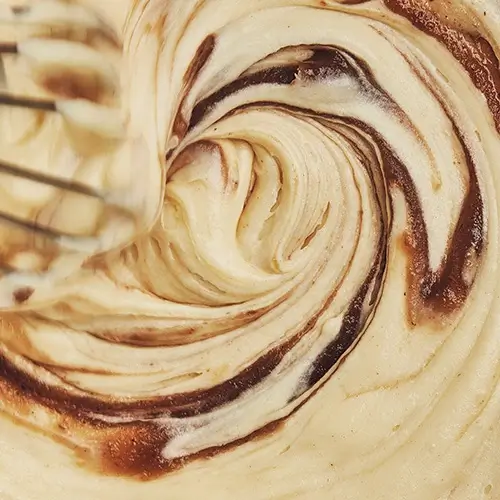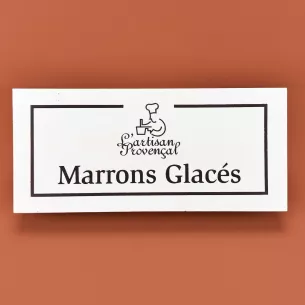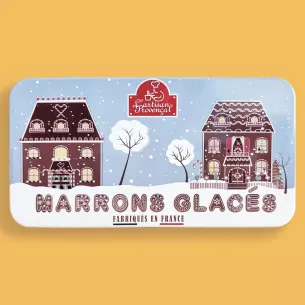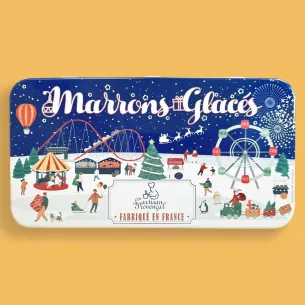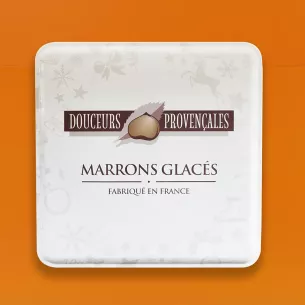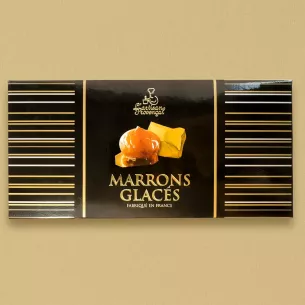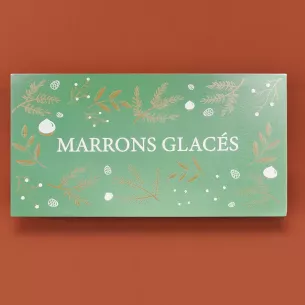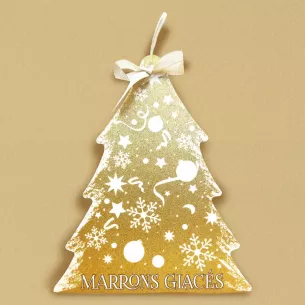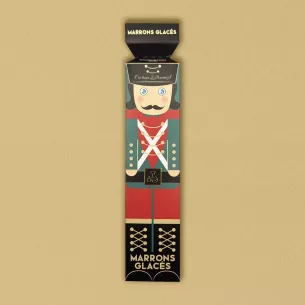The selection process
A marron glacé is a candied sweet chestnut. Nothing to do with horse chestnuts, more commonly known as conkers, which grow on horse chestnut trees and are inedible. It's easy to tell them apart: a prickly outer burr contains several horse chestnuts; if there's only one large one, it's a sweet chestnut.
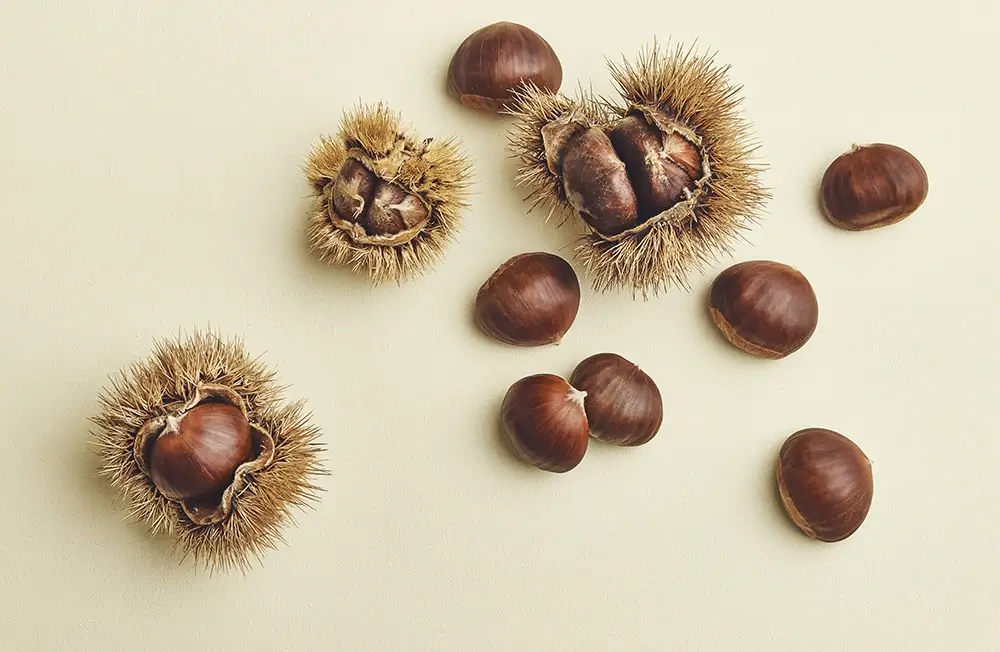
The peeling process
Everything is done by hand. An incision is made in the hull of the sweet chestnut, which is then steamed. All that remains is to remove the second skin and any stubborn strips of skin. Fruit that breaks up during the peeling process can be used for purée or cream, but not for marrons glacés.
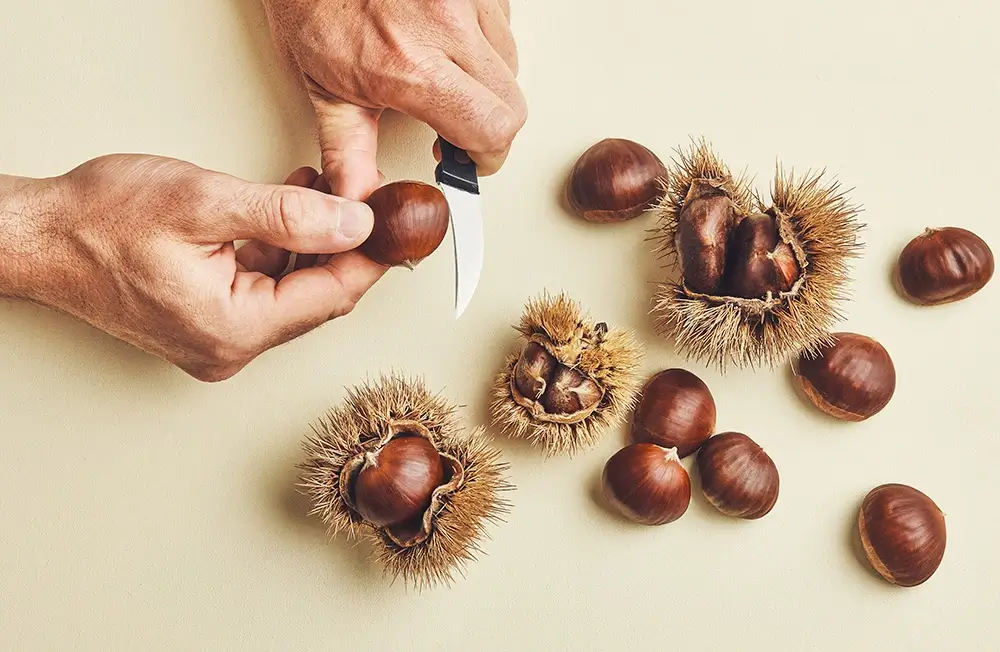
The wrapping in tulle process
Attention, extreme delicacy required! Once the sweet chestnuts are ready, they are placed in pairs, face to face, in little tulle pouches. The tulle prevents the chestnuts from breaking during cooking and absorbing too much sugar.
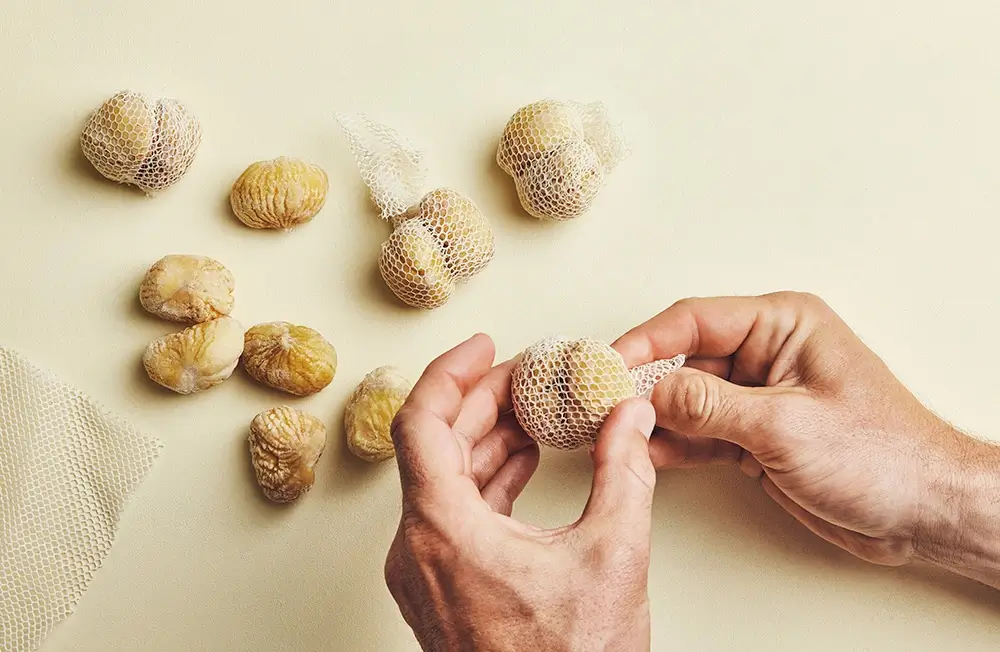
The candying process
For 6 to 7 days in a row, the chestnuts are immersed in sugar baths that get sweeter by the day, and flavoured with whole bunches of black Madagascar vanilla pods. Day after day, the water escapes from the fruit, and is replaced by the sugar that preserves it.
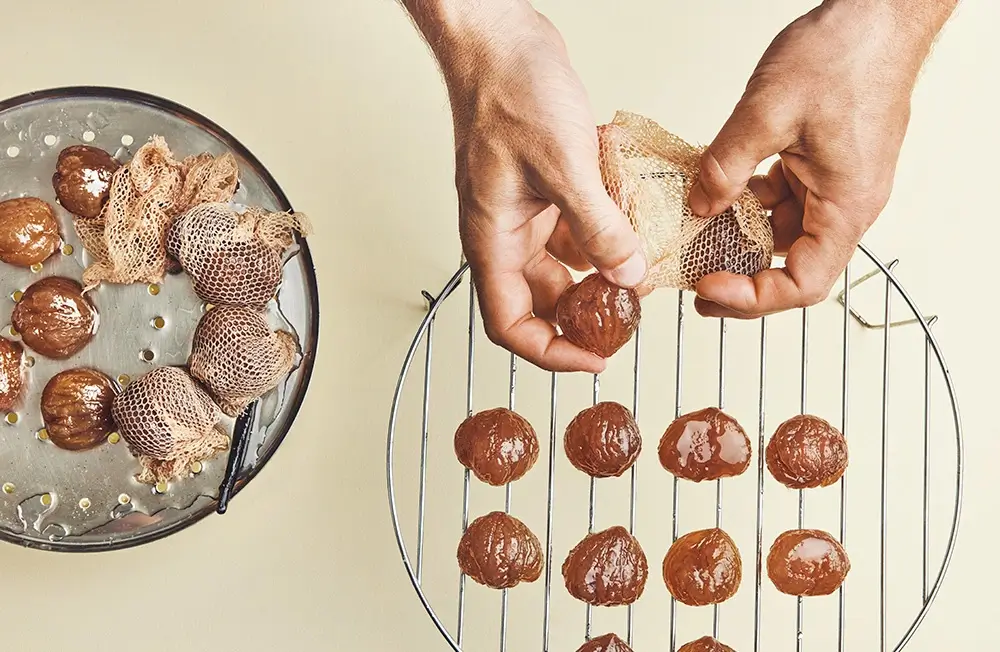
The glazing process
At the end of the 7-day soaking period, the drained sweet chestnuts are sprayed with glaze (a mixture of water and icing sugar). Wrapped in this delicate, protective shell, they are set to one side for a day before being packed.
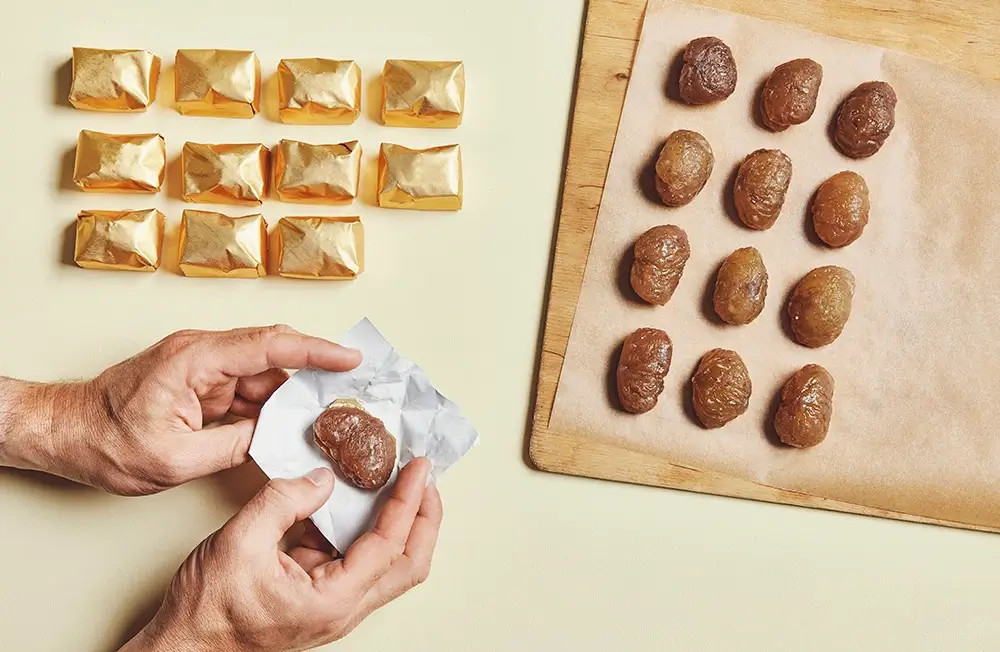
The packaging process
This is the final stage and you know what? It too is done by hand! This is an essential operation, as it is the last one before the chestnut meets the customer at home. The fruit is delicately handled, placed on a cardboard tray and wrapped to preserve its freshness and softness.
